#BUTOH FESTIVAL PERFORMANCES
Explore tagged Tumblr posts
Text
Shinkai no tamashīi 深海の魂
Shinkai no tamashīi is a solo Butoh performance by Tadashi Endo. He expresses a synthesis of theater, the field of tension between yin and yang, male and female and their everlasting alteration. He is the master of being "in between'', that is Butoh - MA
Chicago PremiereTadashi Endo Solo Performance August 3, 8pm Asian Improv aRts Midwest, 4875 N. Elston Ave, Chicagodoors open at 7:30pm PURCHASE TICKETS TADASHIENDO 深海に生き続ける死者の魂。 あらゆる波のうねりは彼らの叫び。 The souls of the dead live in the depths of the sea. Every roar of the waves is their cry. Purchase Tickets Souls in the sea. Refugees, these people fled of war, desperate situations and hunger.…

View On WordPress
2 notes
·
View notes
Text
Dear Listeners,
Happy 2024 to you, in all its weirdness.
I’m working on NEW MUSIC and will be sharing little bits of it and my process with you as I go along. For now, I’m putting the videos on Instagram and my Facebook Page and will link to them on my blog (sorry I let that lapse, somehow I managed to forget blogging existed). Here’s the first, a snippet of a song with the working title “Supernumerary”
instagram
What else? There are a few concerts in the immediate future:
March 15 - ArtYard - Frenchtown, NJ
March 16 - Underground Arts - Philadelphia, PA
March 17 - Le Poisson Rouge - NYC, NY
March 21 - Big Ears Festival - Knoxville, TN
The show in Philadelphia is opening up for my old friends, the Sleepytime Gorilla Museum. My connections to members of that band go back 20+ years to my 964 Natoma days. I first encountered Nils Frykdahl in the previous millennium while he was playing amplified flute in the rafters of the warehouse along with Dan Rathburn making noise and sparks with an arc welder that illuminated butoh performer Shinichi Moma Koga contorting himself on a metal grate. Anyway, Sleepytime is a delightful group of very talented avant garde art rockers and this year needs more of their unfiltered catharsis. I immediately said yes when they asked if I would play for one of their East Coast dates to support their new album.
The Big Ears festival is something I’ve wanted to play at for almost a decade, so I am beyond thrilled to be added this year. I’ll be sticking around for the festival to hear as many of the other artists as possible, it’s off the hook, check it out https://bigearsfestival.org/
More concerts dates are coming in the autumn. East, west, middle, as many as I can fit in ;-)
Thank you for listening!
celloly yours, Z
386 notes
·
View notes
Text
“I grew up in the 1960s in Hermosa Beach, California – a golden South Bay surfer city. My father, Freddy Pfahler, was a legendary surfer who was in Bruce Brown documentaries, including The Endless Summer (1966) and Slippery When Wet (1958). It was an idyllic time, when surfing was our American Renaissance and the lights of consciousness were being turned on. There was so much ritual, mythology and non-traditional religious custom in my life – like getting up at 5am with my father to watch the tide.
(…)
Mary Heilmann, Lorraine O’Grady – in fact, I was in a performance this year with Lorraine, Laurie Anderson and Anohni at The Kitchen in New York called She Who Saw Beautiful Things. It was dedicated to the late Japanese trans performer Dr Julia, who played with Anohni and the Johnsons. And, in 2008, my work was shown alongside Mary Heilmann’s at the Whitney Biennial. I’ve been incredibly lucky to work with some of my favourite teachers and artists. I didn’t care for Joseph Kosuth, though. He once screamed at me: ‘Kembra, what are you?’ At first, I turned away, because his words really hurt me. Then I looked him in the eye and said: ‘I’m an availabilist. I make the best use of what’s available.’ Sometimes, anger can point you in a direction, and that’s what happened to me that day. I invented availabilism because he enraged me.
(…)
My first husband, Samoa Moriki. When I first saw him, he was dancing on the bar at the Pyramid Club in the East Village. We were married and worked together for 21 years. He was from Hiroshima and adored Japanese theatre: Butoh, Noh and playwrights like Yukio Mishima. But he especially loved extreme outside performances, in which people would dive from the sky into pools of water: physically courageous, beautiful acts. Samoa appeared at one of the first Wigstock drag festivals with Lady Bunny and collaborated with the great performance artist Tanya Ransom, who sadly died of AIDS. Ransom was queer but had a child with a woman called Paula Swede. At the time, many of us were gender fluid and simply didn’t talk about it: the language was only just being born. Later, important people like Ron Athey, Bruce LaBruce and Vaginal Creme Davis would articulate it.
(…)
I loved all of Karen Black’s films: she was somehow beautiful yet ugly, and her consciousness was so expanded. One day, Mike Kuchar, the underground filmmaker, said to me: ‘Oh, Kembra: your work looks voluptuously horrific.’ And that’s how the name started. Karen Black actually came to the band’s first L.A. performance, in 1991, and introduced us saying: ‘I’m not sure if this is meant to be an insult or an homage: does voluptuous mean I’m curvy or fat?’ Then she took my hand and said: ‘You’re an artist and this is a creative project.’ She never sued me; she just let me be an artist.
(…)
I do feel the need for community and I believe the greatest changes are wrought through open-mindedness and grassroots activism – the principles of which are still the most vital to me. Important as it is to collaborate and meet others, though, I still spend a great deal of time isolating myself, instinctively protecting this painful humanity. But I learned the value of contrarianism from Lydia Lunch. So, when I crave retreat, I remind myself to go out.
(…)
There’s a very thin veil of freedom and truth over what is currently known as democracy. I would love to invent a different vocabulary for what exists now, but I can’t articulate it today.”
“Perseverance is something I don't think about. I don’t really suggest anyone navigating their work in any way unfamiliar to their own instinctual process. The harm comes when people start doing work for others instead of themselves or by doing what’s popular. As long as an artist stays true to their instincts there’s never a moment of despair. It’s a luxury to be able to do creative projects. Many can’t because they’re taking care of their families or their children. Art isn’t cool anymore, it’s for greedy suckers. Being creative is freedom and sharing what you make is like a celebration of that freedom. But art is for creeps these days, it’s become so disproportionally monetized people feel like failures when they don’t make money. Money has deformed art and money itself should be redesigned. It’s aesthetically so ugly. Change the size paper! Have someone do a sharpie drawing for the 2 dollar bill. The government has been so creative with stamps, they should get creative with money. I’m not sure if I answered that question either.
(…)
The girls of Karen Black I haven’t spoken about enough Christian Music, Alice Moy, Jackie Rivera or Chloé Blackshire. These women have illustrated the songs with costumes and a strong dislike of show business. The show must not go on. We aren’t in the entertainment business, we are just artists who accidentally formed a band that at times has more of an outreach than decorating a wealthy person's home. I like that it’s hard to put a picture frame around what artists do collaboratively. I don’t have a team, a manager, or anyone advising us on relevancy. I don't care if you think I’m relevant. I don’t have a career. I have a life and it’s fun to share things we learn or discover. That’s where art serves its greatest purpose. What else do we do? War? Make prisons for sick poor people or create shit jobs that don’t pay? Being creative and sharing is a benevolent human trajectory that’s difficult to irradiate even under the most heinous conditions. It lifts the spirits.”
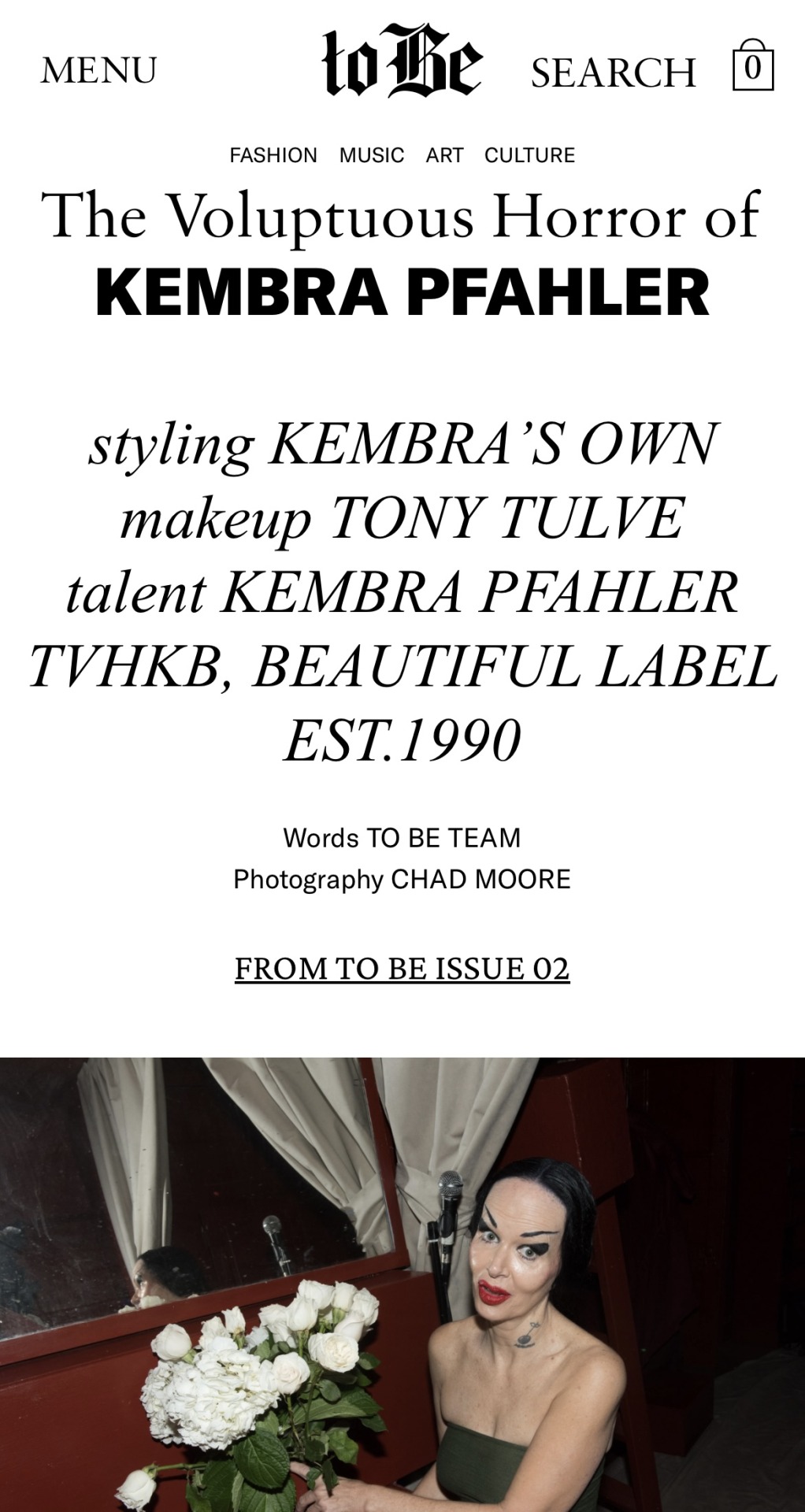
“TVHKB is an interdisciplinary rock band established by my first husband Samoa Moriki and myself. We were married for 21 years. The band is named after one of my favourite characters in the 1975 fi lm Trilogy of Terror by director Dan Curtis. In terms of the new album, it took me about ten years to compile the lyrics. I don’t have a label that supports me and therefore I don’t have any time constraints. My last album I shelved and didn’t put out … I guess I’m fortunate because I don’t have people pushing me for management of my time. When I was a child in Los Angeles, I decided that I didn’t want to live on that side of the tracks, in terms of representation and what not. People were always asking me, “What’s up with your makeup?” and “Why do you dress like that?” I’d say, “What makeup? I’m not wearing any makeup, I usually wear full body paint!” [Laughs] It’s a lifestyle choice, I guess. I chose to be who I want to be. I have very intelligent friends and family so I have the tools to learn how to not listen to people telling me that I can’t do what I want to do.
(…)
To me, a renaissance is a golden time when the lights get turned on. I think New York in the ’80s was certainly a golden era, but of course things change. The years leading up to the ’80s in New York saw some really powerful ‘consciousness raising’ changes – those were the years that gave us people like Martin Luther King and Malcolm X and Alan Watts from the ’60s, when lights got turned on. Now, in 2021, it’s really nice to see young people getting to open galleries and run publications, but I think there has been a big change in corporate morality. There is still misogyny and racism here, those things have never been eradicated. I think a lot of larger corporations and galleries now monopolise on this.
(…)
The hard question is: how do we participate in capitalism knowing how virulent it is without utterly starving to death? It’s something young people, old people, everyone is dealing with. Dictatorships and facism have never been absent from the state of war, which transcends the modern day. It’s like that ACDC song, “War Machine” – it’s such an old song but it’s still so relevant today.
(…)
I would say, never compare yourself to other artists. That’s what I tell my students at Yale and Columbia. Be your own kind of artist.”
8 notes
·
View notes
Text
JD ZAZIE AT ANARCHY IN THE GARDEN FESTIVAL
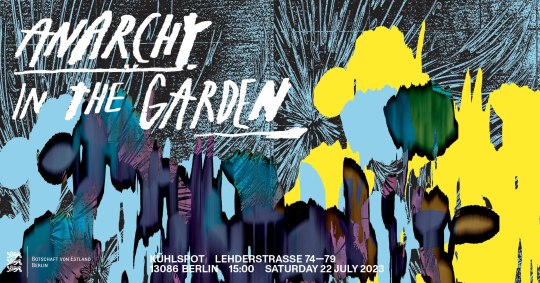
2023/07/22 Anarchy In The Garden festival HUI-CHUN LIN / ELO MASING / SABINE VOGEL SIRI SALMINEN LARA ALARCÓN MELTEM NIL / ELO MASING LORENA IZQUIERDO EDITH STEYER YUKO KASEKI / TOT ONYX MINNA ETEIN JD ZAZIE Kühlspot Social Club Berlin - DE
The second edition of Anarchy in the Garden, feminist festival curated by Elo Masing, is ready to start. It will take place on Saturday 22 July in Berlin at Kühlspot Social Club from 15:00 to 24:00.
Anarchy in the Garden provides a platform for female perspectives in the experimental arts, such as electronic and acoustic improvisation, instant composition, movement and performance, intermedia/installation as well as action poetry. This interdisciplinary and international event is aimed at audiences of all ages, genders, and species. The program of the one day festival will be the following: 15:00 Hui-Chun Lin (cello) + Elo Masing (violin) + Sabine Vogel (flutes) 16.00 Siri Salminen (dance) 17.00 Lara Alarcón (voice, electronics) 18.00 Meltem Nil + Elo Masing (movement and sound improvisation) 19.00 Lorena Izquierdo (action poetry) 20.00 Edith Steyer (saxophone, electronics) 21.00 Yuko Kaseki (butoh) + Tot Onyx (sound) 22.00 Minna Etein (performance) 23.00 JD Zazie (turntable, CDjs)
Kühlspot Social Club Lehderstraße 74-79 - HH links 13086 Berlin
fb event
2 notes
·
View notes
Text
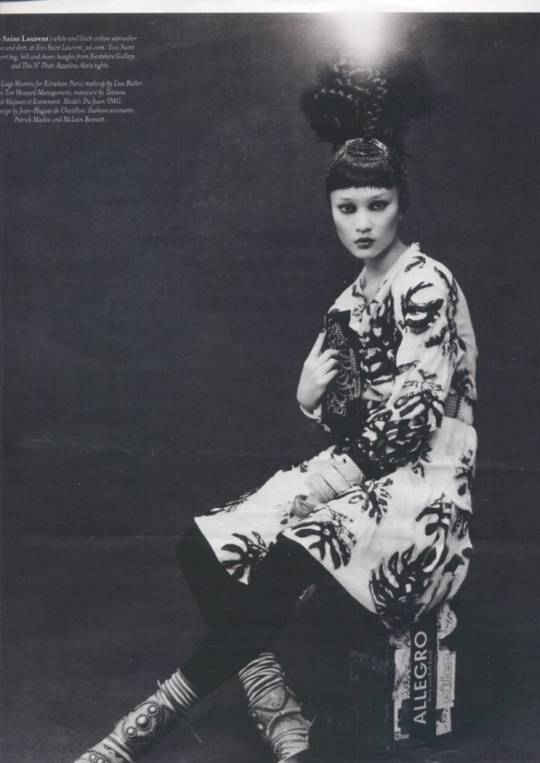
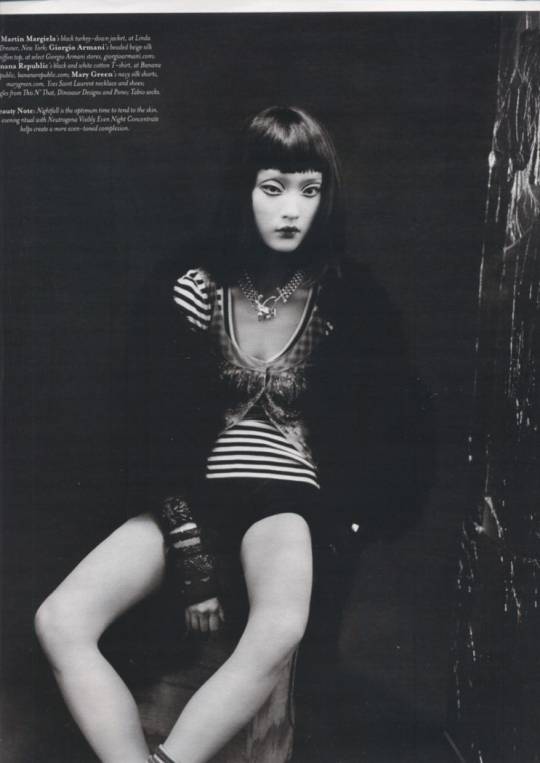
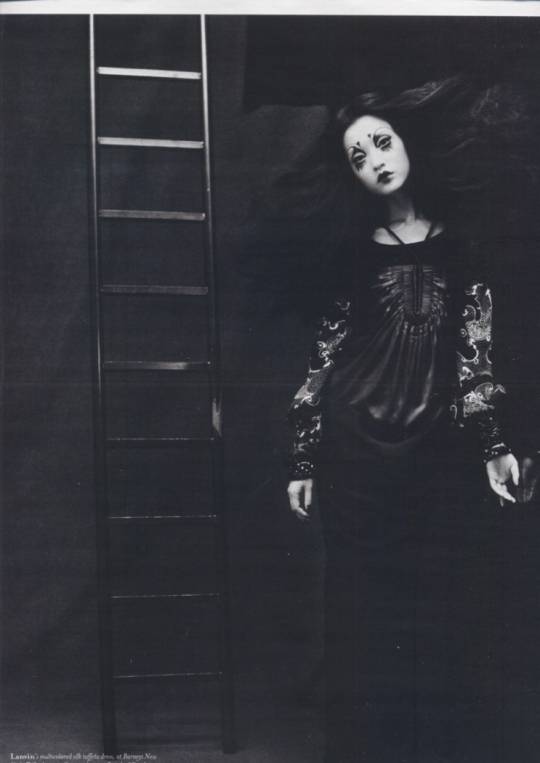

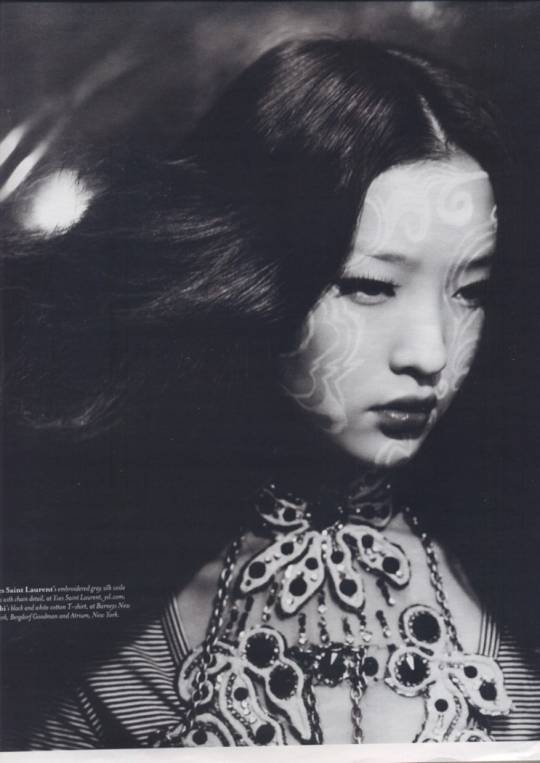
SEEDS OF DANCE
I was born to parents who were working as impresarios,
putting on burlesque dance, juggling and magic shows,
for cabarets in Japan.
As a child, when not playing outside,
I used to swing and shake my body in my own way
to twent LP records of Latin Music,
one after another.
Besame Mucho, Tequila, Mambo Nr 5, El Cumbancello, Little Boy, Amapola,
and more….
I was particularly attracted to a Cuban song called “Babaloo” (Babalú).
I played that song again and again without getting tired.
A slow and mysterious introductory melody
quickly segued into an uplifting rhythm in a festive mood,
and I loved the contrast.
One day when I was eight years old,
I suddenly came up with an idea to make a choreography to that song.
In the first section, a dignified appearance of a mysterious queen,
living in the thick of a dense jungle,
In the second section, her female servant, holding a pot on her head,
and walking sensually to the rhythm.
I switched on a lamp with a red lampshade in the living room of my house,
absorbed in devotedly dancing each role in turn.
With just my 4 year- old-sister for audience,
this was my first choreography of my life.
Needless to say, it had simple movement in a simple structure,
yet I still can’t forget the excitement and joy at that time.
I realized that dancing and making dance could shake and move
tremendously,
not only our body
but also our soul.
Unfortunately, the feeling of exultation disappeared afterwards
when I became a quiet and ordinary junior and high school student
spending peaceful but flatline days.
There were so many things I wanted to do,
but I didn’t know what to do.
I loved reading books, so I empathized with the characters in the narrative world,
indulged myself in my fantasies,
forgetting the passage of time.
When I became a university student, my life changed radically.
All of a sudden I was captivated to participate in the student movement and civic protest.
I devoted myself to demonstrations and political activities almost all day, every day,
without going back to my home.
As a young student I was highly motivated by a sense of justice,
and opposition to social injustices,
feeling the necessity to change the system in a better direction.
This was basically true,
but to be completely honest,
it was also a great fun.
I also loved to share solidarity with my friends,
especially when I had to confront the riot police in a group with them.
“We’re fighting together!”
I was electrified by the joy
from the core of my body and soul.
A couple years later and the political movement was fading away,
slowly and quietly, as if it had been already been planned like that
(like a law of „everything has its beginning and its end“).
Despite those passionate days of solidarity and cohesion,
one by one, my friends left the movement
and returned to being ordinary college students as if nothing had happened…
The walls which I had been enthusiastically banging my body against,
slowly began to collapse,
and there was no object left in front of me to be „AGAINST“.
I started to feel an emptiness inside myself,
as if there were a huge hollow gouged in my heart.
Even though my head was filled with lots of information
and my body was overflowing with youthful energy,
I couldn’t find the center of my body and mind.
I was lost, as if wandering in a dark forest.
I spent hard days, suffering from a sensation of being strangled
by something soft around my neck.
Like an oxygen-deprived goldfish,
desperately gulping for oxygen at the surface of water,
I started to visit museums and theaters to slake my craving
through art and performance.
I knew something for my soul had been missing in my life.
One day, I felt like was struck by lightning,
when I randomly picked up one flyer at the theater.
“Wanted Dancers for Butoh Company Ariadone! No Experience Required.”
Content of Exercises:
Beast, Walking, Oriental, Hanging Body,
Hans Bellmer, Marilyn Monroe
The names resonated with my heart as mysterious enigmas,
and I was also drawn into Andre Masson’s painting on the flyer
of many human bodies wriggling together in a crowd –
I was fascinated by all of them.
I knew nothing of Butoh,
and, on top of that,
I had no experience of dance training.
But I was suddenly possessed by the desire to dance,
and felt „I can dance!“
The next day, I visited the dance studio advertised on the flyer.
A scary looking man with a bald head, beard and mustache opened the door
and stared at me.
To me he looked like a monster about to eat a girl in a fairy tale.
I was so scared I almost turned my back on him.
But at the same time I was so curious to know another world.
I squeezed out my courage, stepped into the house.
And this was the very first day of my Butoh dance history.
It was winter,
I was 20 years old.
Since then, I have been dancing with twists and turns.
My feeling of suffocation disappeared one week after I started to dance.
There was no time to feel pain and suffering in my completely new
dancing life…
In the meantime, my life moved from Tokyo to Paris,
and from Paris to Berlin…
Since then I have been traveling
from one place to another
through the years.
Though I am mainly based in Berlin,
I find it hard to answer when I am asked where I live.
„My home is my body“.
(I sometimes answer this way, with a little parenthesis.)
In a way it is true.
Not only our own personal memories, but also all the cosmic memories
(from the beginning of time) are hidden in our body.
Where we come from and where we are going to,
it is an eternal mystery, like ourselves and the Universe.
The source of exploration is endless.
Butoh is also called “Dance of Darkness”.
For me, it’s about shining a light into the darkness,
into the Unknown of myself and the Universe,
to revive endless memories
and let them dance.
Sometimes, my body gets moved by the Unknown…
Our shell of ego melts down and we feel united with something else.
This moment is a bliss of dance.
To dance from daily matters or personal feelings
to a trembling of life, or a spirit of nature
To dance “Here, Now” while going back to the first source of life…
They are all connected in infinite resonance,
celebrating the diversity of life and nature.
If the uniqueness of each individual fully comes into bloom,
we also unify with the Universe through a universal body.
This is my vision of dance.
A never-ending process of exploration.
I sometimes remember
the joy of transformation
to the music Babaloo
was the seed of my dance.
– Yumiko Yoshioka
0 notes
Text
Artistic Intention and Presentation
For over three decades, Rachael Kostusik has dedicated herself to a site-specific Butoh and Improv practice, drawing inspiration from the natural world, Australian animals, soundscapes, sound healing, Japanese and Australian artwork, and creative writing. Her latest project centered on Ashe's evocative screen prints, imaginative narratives, and Ryan's intricate embodied textiles. This collaboration began when Ashe invited Kostusik to perform Butoh at her solo exhibition held in an old monastery in the southwest of Western Australia. In response, Kostusik proposed that Ashe and Ryan join her as Butoh performers to create a movement installation for the opening night. Despite their lack of formal dance and performance experience, both Ashe and Ryan embraced the opportunity with enthusiasm.
Following the success of the opening night, the group was invited to reprise their movement installation for the local Fringe Festival at the same historic monastery-turned-exhibition space. Ashe brought her background in Belly Dance to the project, enriching their exploration with rhythmic elements, while Ryan contributed a fresh perspective from her knowledge of movement in the Fashion world.
Under Kostusik’s guidance, their collaboration blossomed into a dynamic investigation of Butoh’s transformative potential. With decades of experience working with non-dancers, Kostusik—who is trained in dance and theatre and also works as a counsellor—values how Butoh enriches participants both mentally and physically, nurturing creativity and well-being.
As part of the creative process, Kostusik and Ryan had the privilege of reading a draft of Ashe's novella. Kostusik selected the Prologue scene as a framing device to establish a strong dramaturgical tone for the exhibition opening performance. Kostusik crafted a written response inspired by Ashe’s screen prints and prose, which she recorded and used as an auditory tool during a Butoh training lab to offer participants an immersive way to connect with their bodies and emotions. Live violin, sound healing tools and professional photographers supported their site specific explorations on the beach. This innovative approach combined reflective storytelling with somatic practice, enhancing the depth of the creative development process.
During one of these labs, Kostusik led Ashe and Ryan through workshops that resulted in four distinct movement scenes she called "Fragments." These Fragments became the foundation for an evolving performance that paid homage to their collaborative efforts. The final performance installation featured Ashe’s stunning screen-printed scrolls accompanied by a didactic panel to enrich the audience's engagement with this unique artistic experience bringing textiles, prose, art and movement together.
This project exemplified how Butoh can unlock creativity and cultivate personal growth while bridging diverse art forms into a cohesive expression.
_______
Isle of the Mirage Anchorites Fragments:
Prepare
Travel
Turbulence
Recover

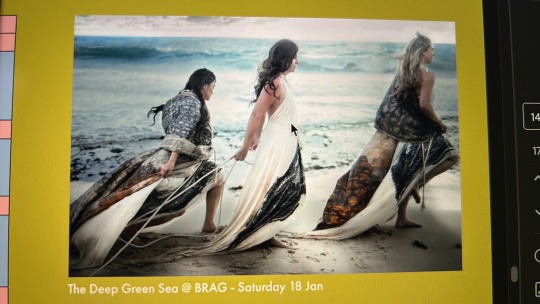
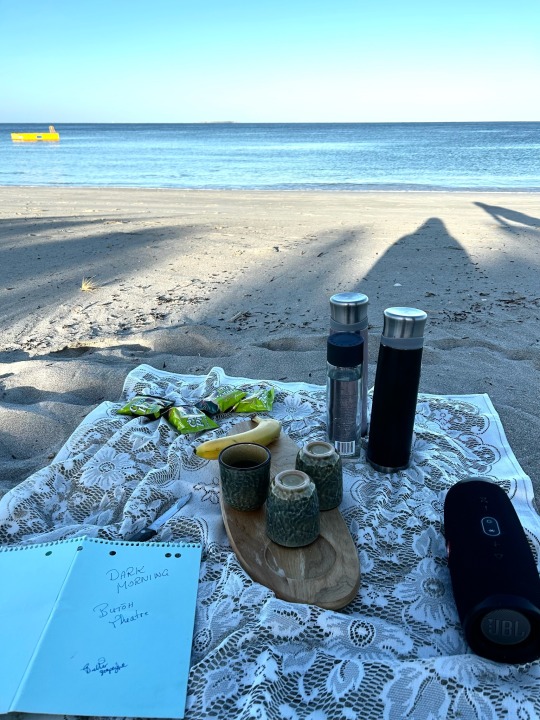
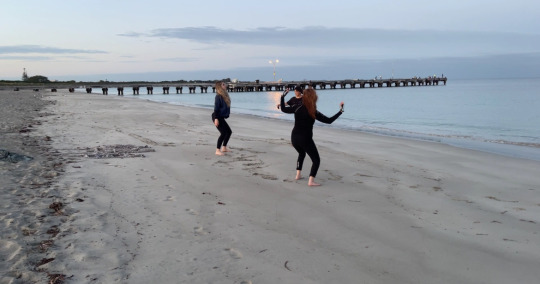


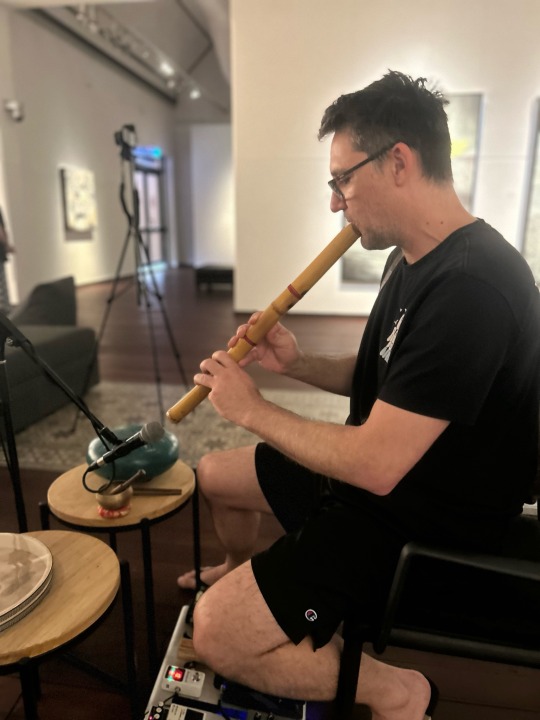
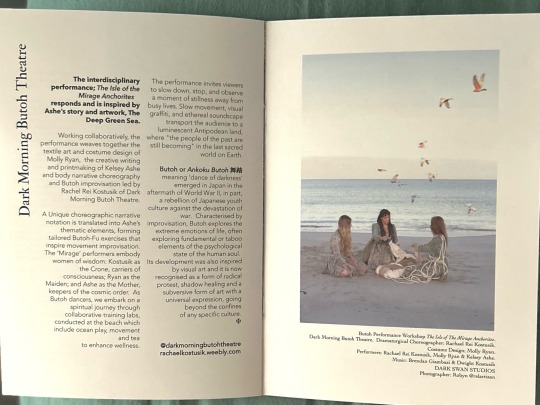
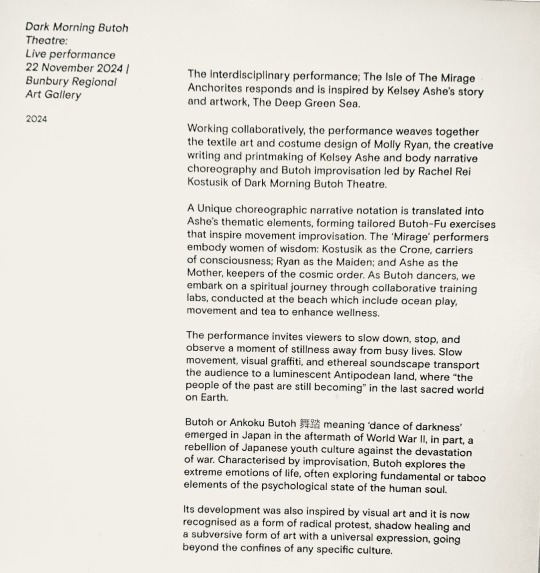
1 note
·
View note
Text
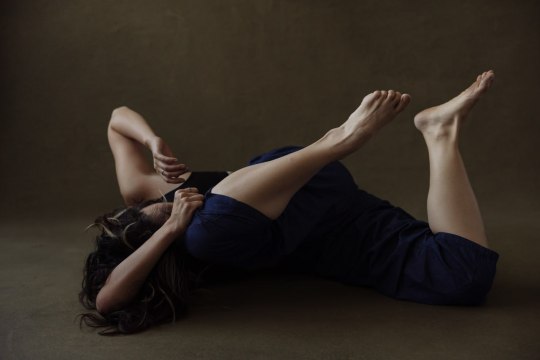
2025
projects/ upcoming: - JAGA-EMOTE! @ groundbreakers 2024-2025 (19 Jan, 9 March, 29 March) - meandering motions ; a movement intensive series - musing through sessions (find out more here) - rewilding @ aliwal arts festival 2025 - butoh intensive/ performance by akihito ichihara - ITCHY FINGERS 1,2,3 by some club | march on! @ esplanade's children season - movement to music | Foreword 2025 @ esplanade - Bundanong Residency @ Sydney, Australia (June) - eXchAnge 2025 @ esplanade (June) Photo courtesy of Crispian Chan
0 notes
Text
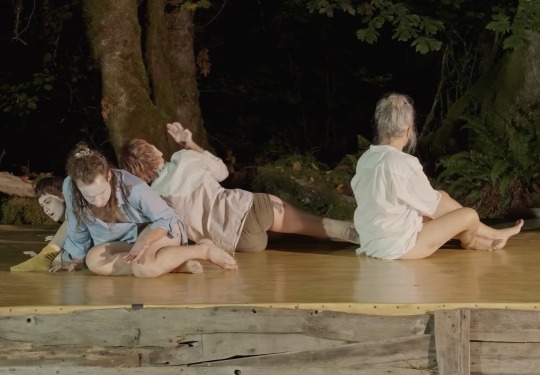
Group Performance
Nozama
Butoh Cabaret
Salish Sea Butoh Festival
Lookout Arts Quarry
Bellingham, WA August 2024
0 notes
Photo
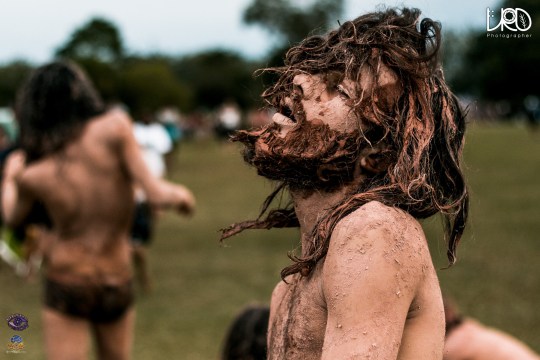
Earthdance Festival 2018
Fotos por: Gustavo Merolli // Sincronizarte // VRD
0 notes
Text
Collective MA
Come to witness the Collective of over 25 Butoh Curious performers after a five day intensive Butoh workshop culminating in this site specific, time based live performance. Tadashi Endo leading a Workshop at Outerspace in Chicago, IL USA, 2016. During the workshop, Tadashi gives us time and space to research yourself and our signature movements under his guidance. Our focus is on recovering,…
#bridgeport#butoh#BUTOH FESTIVAL PERFORMANCES#butoh workshops#Chicago#dance#dance performance#performance
0 notes
Video
youtube
PING Migration (2011)
In 1968, Roger Reynolds collaborated with numerous important figures around the art world including Samuel Beckett, Sekiji Maro (butoh dancer), Kazuro Kato (cinematography), and Karen Reynolds (flute and typographical drawing and design) to create a new intermedia work called PING. It was premiered in Tokyo at Toru Takemitsu's Festival "Orchestral Space '68", and repeated in a Japanese-English version for a crowd of 3500 at the CROSS TALK INTERMEDIA Festival in Japan in 1969 alongside works by Robert Ashley, Salvatore Martirano, Gordon Mumma, Takemitsu, Joji Yuasa (now an emeritus UCSD Professor), and many others. After this, the piece was performed (while Reynolds was a Regent's Lecturer) at UCSD (as a part of a nation-wide tour) alongside works by then UC faculty Pauline Oliveros. Forty three years since the piece's creation, technology, performance practice, intermedia collaboration methods, and Reynolds' own aesthetic foundation have changed in fascinating ways. Some changes were so profound (such as the decay of the original 16mm film print) that they had prohibited the piece from performance. Now, the process of migrating the piece to open source digital platforms has not only given the piece a new life for the 21st century but has also opened doors to new additions which were previously planned but not realized. PING Migration reveals the binary of time's generative and degenerative effects. It is a technical process filled with complex logistical solutions but also a creative process which enables extemporaneous, collaborative artistry. Credits: Text by Samuel Beckett (with permission from the author) Music by Roger Reynolds Original 16mm film directed by Roger Reynolds Original 35mm text slides drawn and designed by Karen Reynolds Migration of analog media to digital formats by Ross Karre, Josef Kucera, Paul Hembree, Roger Reynolds, the UCSD Arts Library, and the Integra Project Performers: Rachel Beetz (flute), Paul Hembree (live electronics), Ross Karre (percussion and video), and Roger Reynolds (piano) Cinematography: Ross Karre and Monica Duncan Recording Engineer: Josef Kucera
2 notes
·
View notes
Conversation
MARINA ABRAMOVIĆ: AN INTERVIEW
By David Ebony
May 1, 2009
If there’s anyone who can rightly be called an art-world diva, it’s Marina Abramovi�?. A preeminent performance artist with a commanding presence on the international art scene for over 30 years, Abramovi�? is known for intense duration-based works that demand extraordinary physical, mental and emotional strength. The Belgrade-born artist has also produced an imposing array of sculptures, installations, photos and video pieces. As Abramovi�? approaches 64, she and her work (in many respects one and the same thing) are as vital and visible as ever. She was one of the five women artists featured in Chiara Clemente’s recent documentary, Our City Dreams. Last year, in Europe, Abramovi�? showed a provocative new multi-screen video, Eight Lessons on Emptiness with a Happy End, and a related photo series, “The Family,” all shot in Laos. She is the curator of an extensive performance-art program at this summer’s Manchester International Festival [U.K., July 2-19]. Two of the biggest endeavors on her horizon are the Marina Abramovi�? Institute in Hudson, N.Y., slated to open in 2012, and a career retrospective that will debut next year at New York’s Museum of Modern Art [Mar. 9-May 31, 2010] before embarking on a two-year international tour. On a recent visit to her office in Manhattan, I inquired about many of these projects and others.
DAVID EBONY: I would like to focus our conversation today on your recent experiences in Laos, the video and photos you produced there. But let’s begin with your upcoming MoMA show. Marina Abramović First I’d like to show you the model of the MoMA installation and tell you about some of the plans for the retrospective. I haven’t really shared them with anyone yet. The show’s titled “Marina Abramović: The Artist is Present,” and it opens one year from yesterday. I’m very excited about it. From the model, it looks like a very elaborate installation.
MARINA ABRAMOVIC: It’s going to be a radical display. It covers only my performance works. You know, basically I have made three groups of works: Artist Body works—these are my performances, and the focus of the MoMA show; Public Body works, including sculptures and interactive public installations, which aren’t so well known in the U.S.; and the Student Body works, about my teaching young artists to perform. It was Klaus Biesenbach [P.S.1 and MoMA curator] who decided to cover only the first group in the retrospective. The show begins with the actual car, or van, that Ulay [Uwe Laysiepen, Abramović’s early collaborator and life-partner for 12 years] and I lived in, traveled in and worked out of for several years early in our careers. In another room there will be slide projections, or rather videos to replace the slide projections that everybody used a lot in the 1970s. To represent my early performances that were restaged at the Guggenheim in 2005 [see A.i.A., Feb. ’06], we’ll show the videos made at that time.
DAVID EBONY: Are all the performances going to be represented by documentary material?
MARINA ABRAMOVIĆ: Actually, we are auditioning performers right now—we need to hire 17 in all—who will reenact some of my past performances every day in the museum galleries. For a few of the pieces, I need someone with some experience with Butoh. The question here is also time. I can’t expect performers to do these endurance tests all day long. There are some great challenges for the performers. Plus, there’s a commitment of three months. This part of the exhibition will end with Balkan Baroque [Abramović’s hours-long performance, in which she frantically scrubbed with a brush heaps of butchered cow bones, and which many saw as a response to the war and carnage in the 1990s in the former Yugoslavia].
DAVID EBONY: That was the first of your performances I saw in person [at New York’s Sean Kelly Gallery in 1995]. It was really unforgettable.
MARINA ABRAMOVIĆ: You know, I toured that performance for about four years, and for four years after I still smelled the bloody bones on me. Even if I didn’t really smell the bones, I thought I smelled them.
DAVID EBONY: Will you perform during the run of the show?
MARINA ABRAMOVIĆ: Yes, every day. I’m planning that now. I’ll appear each day on a sort of shelflike platform, one of 10 attached almost like a series of steps on the main wall of the second-floor atrium. It will be a very simple arrangement, with just me on the platform and a few props and objects, maybe.
DAVID EBONY: Will you be living there, as you did in The House with the Ocean View [a 12-day performance at Sean Kelly in 2002]?
MARINA ABRAMOVIĆ: No, they won’t allow me to. It’s against museum security and regulations. I’ll have to leave at closing time. It will be like a regular workday for me. I want to be humble and vulnerable in the work. I’ll start from the top down. I’ll be on each step for approximately one week. I’ll use some different objects. It will be about a kind of geographic and spiritual journey of an artist. I’m planning to have lounge chairs in front of the wall, like beach chairs, where the visitors can sit and watch. There will be telescopes, too. The idea is that you really can see the detail if you want, but you can also see the entire image. I will leave objects on the platforms as I go. I’m thinking of it basically as a luminous painting on the wall. On one of the platforms, I’m thinking of wearing nothing but an enormous strap-on dildo. The idea is a personal one from when I first started to study art. I was full of hope, but a professor said you don’t have the balls to be an artist. I went home crying desperately, thinking I could never be an artist because I’m not a man. So I have this idea now to appear with a really grotesque, huge penis. But it won’t be used for the same kind of feminist statement as Lynda Benglis’s Artforum ad from the 1970s. And it’s not about porn images. It’s about the artist being self-sufficient, and using a kind of male-female equilibrium.
DAVID EBONY: I wonder if MoMA will let you do that!
MARINA ABRAMOVIĆ: Well, it will be on one of the upper levels, so they’ll have to climb way up there or send a helicopter or something to get me. Another idea I have is based on the Hindu goddess Kali, and some ancient images of the goddess with six heads. But the work will also represent a kind of circle of life. We’ll see. The biggest problem now is finding the money for this, and for the 586 hours of recordings I’m planning.
DAVID EBONY: You still have some time.
MARINA ABRAMOVIĆ: Yes, one year. But the catalogue materials are due the first of June. Arthur Danto is writing the essay, and I’ve been meeting with him several times a week to discuss the work. Another thing I want to do is record an Acoustiguide to the show. I’ve always been fascinated by those. I’ll explain the story of each of my works in English, French, Italian, German and Slavic. I’ll even try Chinese, although I don’t think I could do it very well. Plus, all the early videos have to be restored and upgraded, so we need funding for that. There’s so much to do. It’s just insane. I’m also working on a theater piece with Robert Wilson titled The Life and Death of Marina Abramović. It will premiere in 2011 and, hopefully, coincide with the other venues that the retrospective travels to after MoMA.
DAVID EBONY: Finding funding for a project like this must be extraordinarily difficult today.
MARINA ABRAMOVIĆ: Yes, we are having an incredible economic crisis. But performance art really thrives during bad economic times. Performers always arrive when there’s nothing to sell. Joan Jonas and I are maybe the only ones left from the early days still performing. But performance has always been an alternative art form. Beginning in the ’80s, there was huge pressure on artists to make objects—to make paintings or sculptures. Maybe now things will be different. At the same time as my show, Tino Sehgal will be doing some performances at the Guggenheim Museum. And Klaus [Biesenbach] will be directing a performance workshop at that time. It will cover all of these questions: What are the conditions for performance art? How should documentation be made and presented? What is even considered an artwork?
DAVID EBONY: Has preparing for the show changed your way of thinking about the evolution of performance art, and about your own career?
MARINA ABRAMOVIĆ: I’ll be 64 at the time of the show. I do have this legacy, and I don’t want to leave [the planet] without seeing it or examining it all in a certain way. This kind of thinking started with “Seven Easy Pieces” [the 2005 series of performances at New York’s Guggenheim Museum in which Abramović re-created a number of her early performance works as well as those by Joseph Beuys, Bruce Nauman, Vito Acconci and others].
DAVID EBONY: That series obviously required an enormous amount of training and discipline.
MARINA ABRAMOVIĆ: For MoMA it will be similar. I’ve already started. When I make a new work, I have to go far away and isolate myself. To conceive the MoMA show, I went to an Ayurveda yoga retreat in south India for over a month this past winter. There are some strong restrictions there; you practically live on rice water. You totally detox. You really need time there. There’s no computer, no phone, no fax. After a while, you arrive at a very peaceful state of mind. Sometimes, you need a period of time to disconnect in order to reconnect with the world.
DAVID EBONY: You returned with the concept for the atrium piece in mind?
MARINA ABRAMOVIĆ: Yes. It parallels those stages of attaining complete emptiness. In the end, at ground level, you are the most powerful, though empty and vulnerable. The most important breakthrough for me was the idea to go from up to down, and not down to up. It’s about humility. Our culture is so much about building up the ego of the artist. But it’s not you who is important, it’s the work. The ego is actually an obstacle to the work. In India this is somehow deeply understood. You have to go through a process of incredible discipline to get to a state of complete emptiness. At the lowest level, there is nothing. For a performance artist this is the most powerful tool. Then the art is truly the artist and not about the objects or props.
DAVID EBONY: But this is different from the ego?
MARINA ABRAMOVIĆ: Yes, the artist should be empty and vulnerable, available and accessible. For me that’s the point of the piece. Our culture is so much about labels, and the artists are made into Hollywood stars.
DAVID EBONY: Let’s talk about the Laos project. First of all, how did you wind up working in Laos?
MARINA ABRAMOVIĆ: France Morin [art historian and curator in charge of “The Quiet in the Land,” a UNESCO and Laotian government-sponsored cultural endeavor] invited me to go to Laos as part of a program to introduce foreign artists to that country.
DAVID EBONY: Did you go with the intent of making a work?
MARINA ABRAMOVIĆ: No, the first trip was just to look around and try to get to know the place. I asked to see the most important shamans. I just happened to arrive during a Buddhist holiday; it was a celebration of water. Everyone was out along the river. There were monks chanting. The entire population was there. At the same time the children were on the roads playing with Chinese-made, realistic-looking plastic toy weapons. During the ceremony they were running around shooting at each other and imitating bad TV shows. The adults and the monks didn’t seem to mind. I was struck by the bizarre contrast of the children playing war games and the peaceful ceremony. It was a very ancient ritual with the shaman presiding.
DAVID EBONY: It was a pre-Buddhist ritual?
MARINA ABRAMOVIĆ: Yes. The shaman sacrificed a pig, and the ceremony was all about entering the spirit world. Afterward, I asked the shaman to tell me about or show me where the spirits lived. He took me to a holy island where no one ever sleeps. It was amazing. There was the sacred tree and the waterfall, which appear at the beginning and at the end of Eight Lessons on Emptiness with a Happy End. When I got back home, I had all of these ideas and images in my head. The children and their war games were haunting. The amount of violence shown on the TV in Laos is incredible. They watch completely unedited war scenes and ultraviolent Kung Fu movies.
DAVID EBONY: Do they receive TV signals from all over Southeast Asia?
MARINA ABRAMOVIĆ: Yes. There are houses there where the antennas and the satellite dishes are so big, the houses are bending over. The antenna’s bigger than the house. So the children are seeing all sorts of unedited material. And, in their war games, the children replay and imitate the images they see on TV all the time. I decided to return to Laos and make a film centered on the children’s war games and the contrasts with Buddhism. I’ve worked with children before. It was also for a multi-channel video piece, made in Serbia, called Count on Us [2003]. I showed it at the Venice Biennale. We worked with 220 children all dressed in black. They were a kind of chorus lying in a formation of a five-point star. I stood in the middle, also wearing black, but holding a human skeleton. In Laos, we built a simple house and filled it with furniture that was 20 percent bigger than in a normal house. It was to be more or less the children’s headquarters. The logistics for the project were crazy. I took my Serbian crew with me, the same ones who worked on Count on Us.We had to rent a rice paddy from the village where we shot the film. It was very complicated with the local government. They thought we were going to use the film to criticize the communist system. One of the big problems was how to bring a large truck with a generator from Thailand to Luang Prabang in Laos. You can’t make a film in Laos using local electricity because it’s unstable. It comes and goes, and you could waste an enormous amount of time and money. So we got a generator in Bangkok, but they stopped the truck at the border. It was held up for days.
DAVID EBONY: Did the border guards want baksheesh—some kind of bribe?
MARINA ABRAMOVIĆ: After the truck was held up for three days we went to talk with the border officials. Not a fee exactly, they called it a commission, a tariff or the local tax. Anyway, we finally gave an official $3,000, and miraculously the truck was allowed to cross the border. Then the casting was also complicated. There were lots of regulations about working with the children. There were 25 of them, accompanied by parents or other family members. Each child had to take a nap after lunch. There were some very young ones; they ranged in age from 4 to 10. They were really amazing. One of the girls, especially, was a real actress, like a little Angelina Jolie. On the set, I really didn’t want the children to perform without knowing what they were doing, so every time we shot a scene, we showed the playback or the images to them on the computer and explained everything. We bought lots of the plastic weapons at the local Chinese market and had uniforms made for the kids. Some of the machine guns had red laser guide lights.
DAVID EBONY: In your drawings and studies for the film, are those red dots on the faces and bodies the laser beams?
MARINA ABRAMOVIĆ: Yes.
DAVID EBONY: At first, I thought the red marks were wounds. The drawings are wonderful. Will you show them when you debut the video in the U.S.?
MARINA ABRAMOVIĆ: I’ve been talking with Sean [Kelly] about that, about possibly making a gallery exhibition to coincide with the MoMA show. The Laos project won’t be part of the retrospective.
DAVID EBONY: Since the children were the main performers in the Laos project?
MARINA ABRAMOVIĆ: Yes, I’m in only one scene in the video, where I’m tied up, the vanquished one, and pulled by the children across the field. I’m kind of big, so the crew had to help with that. The children quickly learned to perform for the camera. Of course, from TV they already knew all sorts of combat moves, interrogation techniques and many ways of executing people. It’s incredible. Not all of the images are about violence, however. Some scenes are of meetings and negotiations going on in the house.
DAVID EBONY: The house seems to be the center point of the film and the photos as well.
MARINA ABRAMOVIĆ: Yes. I wanted to burn the house at the end of the film. But when I saw the poverty all around, I thought it would be obscene to destroy the place. In the end, it was recycled and the villagers use parts of it in other ways. I was thinking that I should burn a small-scale model of the house. We built the model, but it looked so fake in the video, I decided not to use it. Instead, we burned the children’s weapons. That’s the “happy end” in the title. They finally decide to get rid of the weapons. Near the end, the children run out of the house and throw the weapons in a pile to burn. For the final shots, the whole village came to watch. The head of the communist party for the region came, and local officials, plus all the families of the children and school professors. But the smoke from the pile of burning plastic toys was just horrible. It sent a thick black smoke cloud everywhere. The children wanted to keep the weapons, and were upset that we were burning them, so we had to buy them new ones. The film is about war, the killing and destruction, and in the end there’s complete emptiness, a landscape without people. It begins and ends with the images of the waterfall and the sacred tree.
DAVID EBONY: The video, a 26-minute loop, is shown on five panels, two vertical and three horizontal, so it’s doesn’t have a linear narrative as in a conventional film.
MARINA ABRAMOVIĆ: The format is similar to Count on Us, and there are similarities in the theme, too. The earlier piece refers in some way to my communist/Orthodox Christian upbringing. In later years, I turned to Buddhism and Buddhist practice, and so I am exploring here in the Laos project the communism/Buddhism culture and those relationships on a personal level, too. In some sense, all the themes are personal. That’s why I called the photo series “The Family.” The title, Eight Lessons on Emptiness, is completely Buddhist. It’s dedicated to friends and enemies alike, an idea that comes from the Dalai Lama’s thoughts on forgiveness.
DAVID EBONY: The photos in “The Family” series were shot at the same time as the film. Can you talk a bit about a few of the images?
MARINA ABRAMOVIĆ: There’s a negotiating scene [The Family II] inside the house, and another [The Family IV], where they are asleep. The children had to stay in those positions for a long time. For The Family III, the one with the girls sleeping under the pink blankets, we cut a hole in the roof of the house and set the cameras up there. After lunch the children took a nap, and so they are actually sleeping. I would never have been able to get them all to pose as if they were sleeping. I bought these hot-pink blankets in the Chinese market. I liked the extreme contrast of the children’s innocence and the machine guns in this photo. Again, the image has a personal meaning. I think of my parents, who were often in uniform during the day, and at night they always slept with weapons nearby or under the bed.
DAVID EBONY: The one photo of you with all of the weapons [The Family XI] is a startling shot that doesn’t seem as closely related to the film as the other pictures.
MARINA ABRAMOVIĆ: While we were shooting the video, I was constantly walking around with armfuls of the children’s weapons. After a while, I started to think of it as a bouquet. It’s an ironic image as a bouquet of guns. It’s part of the photo edition, but the image wasn’t included in the film.
DAVID EBONY: The Family B is another powerful photo. It shows you with a boy holding a machine gun seated on your lap, and a boy in a monk’s robe standing behind. It seems to merge Christian iconography with an image of a Buddhist ideal.
MARINA ABRAMOVIĆ: It’s a very important piece for me. It’s the Laos family dynamic—one son is trained to kill, and the other trained to pray.
DAVID EBONY: Do you think of yourself as a political artist? When I first saw the images of your works from Laos, they struck me as your most direct political statement to date.
MARINA ABRAMOVIĆ: A good work of art has to have layers of meaning and many components. If you limit yourself, it’s not good. I don’t ever think of myself as a political artist. Politics is just one facet of the work. I don’t like to label myself. To label your work as performance art, conceptual art, political art or even feminist art is dangerous because it deals with specific issues. Then it’s like the newspapers. Your work is dated. If you react to a specific current event, your work will always have that date. I avoid defining myself like that. That’s how I am able to survive all this time.
DAVID EBONY: Some artists are able to do it quite well, though. I’m thinking of Hans Haacke, for instance.
MARINA ABRAMOVIĆ: That’s true. His “Germania” installation at the Venice Biennale [1993] was a really amazing experience. But it transcended so much. It was not only about Germany or specific to the German state. It had a universal theme. The same is true of my Balkan Baroque and also the Laos project. In some way Eight Lessons relates to young people in any country reacting to war and violence and to the issue of child-soldiers. The themes are not specific to Laos. I just happened to make the piece there, but it could just as well apply to Middle America. Any kid in the world today plays these incredibly violent video games that could easily become a reality. The Laos piece addresses the issue on many levels. And it’s also personal in some way.
DAVID EBONY: The most recent of all your works, which you produced since the Laos project, the photos Happy Xmas, Portrait with Potatoes and Portrait with Onion [all 2008], are self-portraits. Especially in contrast with the Laos works, these seem totally personal and intimate.
MARINA ABRAMOVIĆ: The series is called “Back to Basics.” I shot the photos in upstate New York. In a way, the series is about poverty, inflation and money. I really felt the need to go back to basics. The potato image is very much an homage to van Gogh, especially his Potato Eaters. There’s something very basic about peeling potatoes. I always sit at the kitchen table alone peeling them. Portrait with Onion is a meditation on onions. In the photo, you can see that, underneath the onions, there’s an article about Sarah Palin on the front page of the New York Times. The photo relates to a performance work I did in 1995, when I ate onions and cried, complaining about my life [The Onion]. It goes with a text I wrote. I’ll read some of it to you: “I am tired of changing planes so often, waiting in the waiting rooms and tired of waiting for endless passport controls. I am tired of more career decisions. I’m tired of lonely hotel rooms, room service, long distance phone calls, bad TV movies, tired of always falling in love with the wrong man. I’m tired of being ashamed of the wars in Yugoslavia ... I want to get old, really old, so that none of this matters any more. I want to understand and see clearly what is behind all of this. I want not to want anymore.” And I’m eating this onion and constantly crying. I thought it was time to make another version. Happy Xmas is also an image of me crying. Artists work better with pain than with happiness. Pain transforms you. When you are happy, there’s not much to do. Pain, emotional pain, can sometimes enable you to make deep changes in your life. In my present situation of being abandoned again, I was crying and crying. Happy Xmas is a kind of Butoh image; it shows a state of mind. Lately, I’ve been reading passages from my biography written by James Westcott, a young author who spent two years researching the book. He’s now selecting the illustrations, working with my assistant, Davide Balliano. The book’s being published by MIT Press and will come out early next year, in time for the MoMA show. It’s called When Marina Abramović Dies. What do you think of the title?
DAVID EBONY: I think it’s good. It’s mysterious. There’s a certain suspense about it that makes you want to find out if and when you did die. Maybe it suggests that you might never die, or that you die again and again.
MARINA ABRAMOVIĆ: James interviewed most everyone who knows me in Belgrade, Amsterdam and New York. The contradictions that people say are amazing, but so are the connections. It begins and ends with the death of my mother, Danica. Everything she did was official. She was the director of the Museum of Revolution and Art in Belgrade and was a friend of Tito. She died just last year.
DAVID EBONY: Was she supportive of your work, and your career?
MARINA ABRAMOVIĆ: After she died, I went to her apartment and found that in all of the catalogues, books and clippings about my work that I had given her, she had gone through and made black bands across the body in pictures of me naked, or she cut them out altogether. When reading James’s book, I really cried a lot when I read the passages about my split with Ulay. A friend once asked him, “How could you break up with Marina?” And Ulay replied, “Because I thought I deserved less.” I always think I’m too much for everybody. Just too much, you know.
DAVID EBONY: And you’ve gone through that again recently.
MARINA ABRAMOVIĆ: Yes, Paolo [Italian artist Paolo Canevari] and I were together for 12 years also. I just can’t seem to get to 13 years with anyone.
DAVID EBONY: Well, if it makes you feel any better, you know 13 is an unlucky number.
MARINA ABRAMOVIĆ: This time it’s worse because we’re older. For example, Paolo drove us everywhere. Now I have to work on getting my driver’s license. I’ve been practicing with a driving instructor at my place upstate. If I pass the driver’s test next week, I’ll be the first female in my family ever to have a license.
DAVID EBONY: You’ve also been working upstate on your foundation in Hudson. You recently bought a large disused theater there for the purpose. Are there new developments?
MARINA ABRAMOVIĆ: Yes. It’s going to be called the Marina Abramović Institute. I think it’s a better name than “foundation.”
DAVID EBONY: It suggests more possibilities, a broader range of activities.
MARINA ABRAMOVIĆ: That’s true. It can be a study center, a performance space, many things. Its nonprofit status finally came through. At first, I had an architect’s plans to make complex renovations, but I brought some friends to see the theater, and they gave some good ideas for a much simpler plan that’s a lot less expensive. It will be doable. Its main focus will be duration-based art. The Institute will sponsor performances and films that are a minimum of six hours long. We will have comfortable chairs, like chaise longues or beds, provide blankets and have food available so the audience can really spend time there. If a piece is 10 hours long, you can go to sleep and wake up and still be in the art space. It’s very important for artists to think of duration works to perform. The most important thing artists can do now is to stretch the present moment. Life is becoming faster and faster, and so we have to absolutely make art slower and slower.
2 notes
·
View notes
Photo
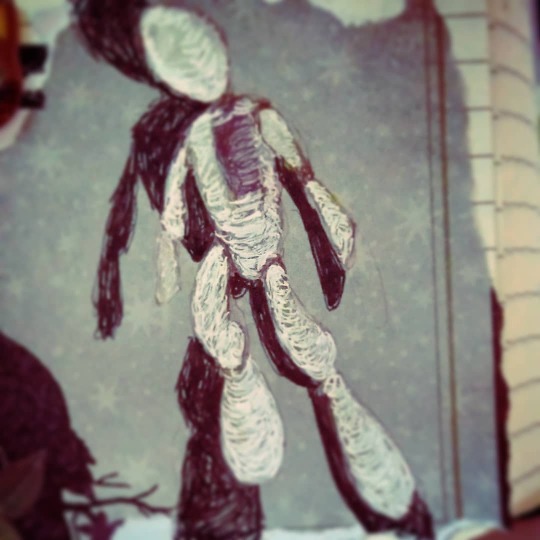
Sketch from memory of a life size rag doll Mari Osanai performance at the Butoh festival last month. #drawing #sketch #butoh #butohart #ragdoll #gelpens #penandinkdrawing #creepydolls #artjournal #artoninstagram https://www.instagram.com/p/B4an7IAF0di/?igshid=1wvr4j8knws2s
#drawing#sketch#butoh#butohart#ragdoll#gelpens#penandinkdrawing#creepydolls#artjournal#artoninstagram
1 note
·
View note
Text
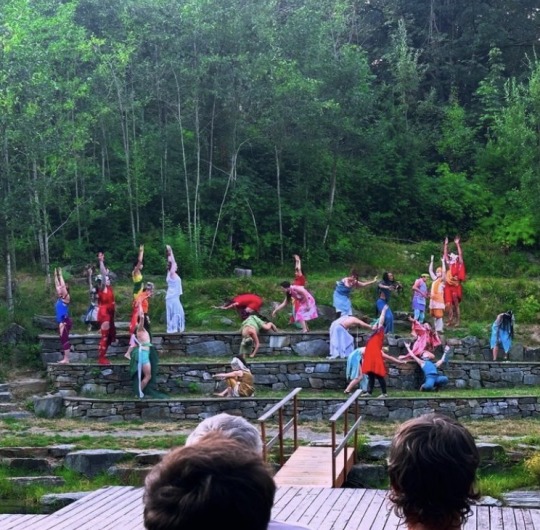
Group Performance
Choreographed by Tadashi Endo
Salish Sea Butoh Festival
Lookout Arts Quarry
Bellingham, WA August 2024
0 notes
Video
vimeo
HYSTERESIS | Robert Seidel | Soundtrack by Oval from Robert Seidel on Vimeo.
HYSTERESIS Experimentalfilm Cinemascope 2K, color, 2.35:1 Dolby 5.1 D 2021
Film: Robert Seidel Music: Oval Performance: Tsuki Title Design: Bureau Now 5.1 Master: David Kamp Funding: FFA Filmboard Special thanks to Miriam Eichner, Carolin Israel, Falk Mueller and Paul Seidel
In tech companies, universities and artist studios, machines work through and learn the history of mankind. Copyright dissolves; distinctions between original, imitation or inferior reproduction erode. No origin, no responsibility, no clear bias - just a primordial soup that can be transformed into any form without questioning knowledge systems and hierarchies. In this silent, but radical restructuring of entire industries, the artist becomes a template of a future that is digitally assembled from a myriad of fragments of the past.
In the experimental film Hysteresis, Seidel’s analogue drawings and digital processing merge with the queer performance of Tsuki, whose movements improvise between Ballet, Butoh and Berlin club culture. In a fusion process, her image is recorded, fed back through Seidel’s devices and then projected onto her body. An expanding digital sphere beyond labels and identifications with gender, culminating in dehabitualised neural patterns and reconceived fabrics of intimacy beyond rational understanding. In a final step, the resulting sessions are edited and dissolved by machine-learning strategies into a constant flow of pulsating images and folded spatial configurations. The resulting Muybridgean silhouettes, baroque textures and bursting structures fluctuate between the second and third dimensions, unfolding free-floating gestures that unhinge the laws of nature. Meanwhile, delicate abrasions of the pictorial frame build bridges into contradictory concatenations of reality. The soundtrack by Oval (Markus Popp) incessantly corrodes this dense web of associations, threatening to dissolve the remaining fragile points of reference.
At a time when an overriding predictability is forced upon us all, the film celebrates the disruption of pattern recognition and the artistic corruption of results induced by artificial intelligence, specifically machine learning. With Hysteresis Seidel explores new grounds in his experimental practice and collaboration. Unveiling a frenetic, delicate and flamboyant visual language, that speaks to the hysteria and hysteresis in this historical moment. The artist wants to open a discourse about these unique modes of AI creation – with implications beyond the film and other media, to that singularity, where history collapses into a single point in the present.
To the freedom of digital filmmaking beyond (commercial) hyperrealism! (Robert Seidel, December 2021)
robertseidel.com instagram.com/studiorobertseidel facebook.com/studiorobertseidel twitter.com/robertseidelcom
Festival (Selection): 04/22 National Premiere, Filmfest Dresden, National Competition, Dresden, Germany 04/22 Video Installation of HYSTERESIS, Künstlerhaus Bethanien, Berlin, Germany 05/22 Special Mention, ITFS Stuttgart, International Competition, Stuttgart, Germany 05/22 International Premiere, Audience Award, Animation Avantgarde Competition, Vienna Shorts, Vienna, Austria 06/22 Annecy International Animation Festival, International Competition, Annecy, France 06/22 Animafest Zagreb, International Competition, Zagreb, Croatia 09/22 Encounters Film Festival, Bristol, UK 09/22 Special Mention, Festival of Animation, Berlin, Germany 09/22 Ars Electronica, Experimental Film Program, Deep Space Theater, Linz, Austria 09/22 Taichung International Animation Festival, New Angles Program, Taichung, Taiwan 09/22 Bucharest International Experimental Film Festival, International Competition, Bucharest, Romania 10/22 Bucheon International Animation Festival, Short Competition, Bucheon, South Korea 10/22 Hysteresis & Company: LIVE + Screening, Schaubühne Lindenfels, DOK Leipzig, Germany 11/22 Aesthetica Short Film Festival, Artists' Film Selection, York, UK 11/22 Audience Award, LIAF, International Competition: Abstract Showcase, London, UK 11/22 Kasseler Dokumentarfilm- und Videofest, Kassel, Germany 11/22 Kurzfilmtage Winterthur, International Competition, Winterthur, Switzerland 11/22 Special Mention, Tbilisi International Animation Festival, Tbilisi, Georgia 12/22 Beijing International Short Film Festival, International Competition, Beijing, China 03/23 Ann Arbor Film Festival, Shorts Competition, Ann Arbor, USA 03/23 Kaboom Animation Festival, AI & Animation, Amsterdam, Netherlands 03/23 Videoformes, Clermont-Ferrand, France 03/23 Glasgow Short Film Festival, Rise of the Empathy Machines, Glasgow, UK 04/23 Images Festival, The Ghost in the Machine, Toronto, Canada 06/23 Short Shorts Film Festival & Asia, Unlock -Jumping into a New World, Tokyo, Japan
Full list > robertseidel.com/hysteresis/
0 notes
Video
vimeo
HYSTERESIS Experimentalfilm Cinemascope 2K, color, 2.35:1 Dolby 5.1 D 2021 Film: Robert Seidel Music: Oval Performance: Tsuki Title Design: Bureau Now 5.1 Master: David Kamp Funding: FFA Filmboard Special thanks to Miriam Eichner, Carolin Israel, Falk Mueller and Paul Seidel In tech companies, universities and artist studios, machines work through and learn the history of mankind. Copyright dissolves; distinctions between original, imitation or inferior reproduction erode. No origin, no responsibility, no clear bias - just a primordial soup that can be transformed into any form without questioning knowledge systems and hierarchies. In this silent, but radical restructuring of entire industries, the artist becomes a template of a future that is digitally assembled from a myriad of fragments of the past. In the experimental film Hysteresis, Seidel’s analogue drawings and digital processing merge with the queer performance of Tsuki, whose movements improvise between Ballet, Butoh and Berlin club culture. In a fusion process, her image is recorded, fed back through Seidel’s devices and then projected onto her body. An expanding digital sphere beyond labels and identifications with gender, culminating in dehabitualised neural patterns and reconceived fabrics of intimacy beyond rational understanding. In a final step, the resulting sessions are edited and dissolved by machine-learning strategies into a constant flow of pulsating images and folded spatial configurations. The resulting Muybridgean silhouettes, baroque textures and bursting structures fluctuate between the second and third dimensions, unfolding free-floating gestures that unhinge the laws of nature. Meanwhile, delicate abrasions of the pictorial frame build bridges into contradictory concatenations of reality. The soundtrack by Oval (Markus Popp) incessantly corrodes this dense web of associations, threatening to dissolve the remaining fragile points of reference. At a time when an overriding predictability is forced upon us all, the film celebrates the disruption of pattern recognition and the artistic corruption of results induced by artificial intelligence, specifically machine learning. With Hysteresis Seidel explores new grounds in his experimental practice and collaboration. Unveiling a frenetic, delicate and flamboyant visual language, that speaks to the hysteria and hysteresis in this historical moment. The artist wants to open a discourse about these unique modes of AI creation – with implications beyond the film and other media, to that singularity, where history collapses into a single point in the present. To the freedom of digital filmmaking beyond (commercial) hyperrealism! (Robert Seidel, December 2021) http://robertseidel.com https://ift.tt/nb8QwLH https://ift.tt/ETzmZR6 http://twitter.com/robertseidelcom Festival (Selection): 04/22 National Premiere, Filmfest Dresden, National Competition, Dresden, Germany 04/22 Video Installation of HYSTERESIS, Künstlerhaus Bethanien, Berlin, Germany 05/22 Special Mention, ITFS Stuttgart, International Competition, Stuttgart, Germany 05/22 International Premiere, Audience Award, Animation Avantgarde Competition, Vienna Shorts, Vienna, Austria 06/22 Annecy International Animation Festival, International Competition, Annecy, France 06/22 Animafest Zagreb, International Competition, Zagreb, Croatia 09/22 Encounters Film Festival, Bristol, UK 09/22 Special Mention, Festival of Animation, Berlin, Germany 09/22 Ars Electronica, Experimental Film Program, Deep Space Theater, Linz, Austria 09/22 Taichung International Animation Festival, New Angles Program, Taichung, Taiwan 09/22 Bucharest International Experimental Film Festival, International Competition, Bucharest, Romania 10/22 Bucheon International Animation Festival, Short Competition, Bucheon, South Korea 10/22 Hysteresis & Company: LIVE + Screening, Schaubühne Lindenfels, DOK Leipzig, Germany 11/22 Aesthetica Short Film Festival, Artists' Film Selection, York, UK 11/22 Audience Award, LIAF, International Competition: Abstract Showcase, London, UK 11/22 Kasseler Dokumentarfilm- und Videofest, Kassel, Germany 11/22 Kurzfilmtage Winterthur, International Competition, Winterthur, Switzerland 11/22 Special Mention, Tbilisi International Animation Festival, Tbilisi, Georgia 12/22 Beijing International Short Film Festival, International Competition, Beijing, China 03/23 Ann Arbor Film Festival, Shorts Competition, Ann Arbor, USA 03/23 Kaboom Animation Festival, AI & Animation, Amsterdam, Netherlands 03/23 Videoformes, Clermont-Ferrand, France 03/23 Glasgow Short Film Festival, Rise of the Empathy Machines, Glasgow, UK 04/23 Images Festival, The Ghost in the Machine, Toronto, Canada 06/23 Short Shorts Film Festival & Asia, Unlock -Jumping into a New World, Tokyo, Japan Full list > https://ift.tt/1s3tiwb
0 notes